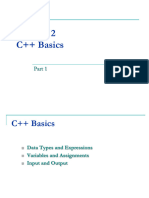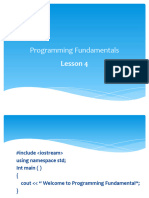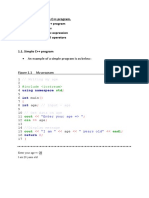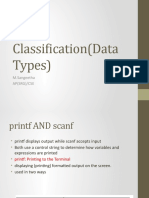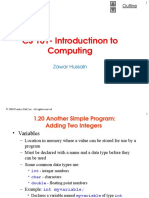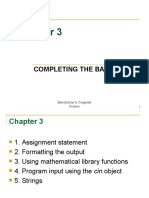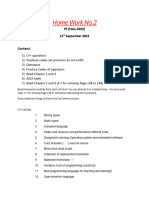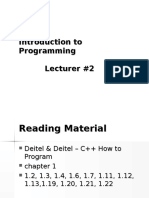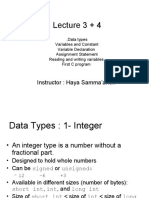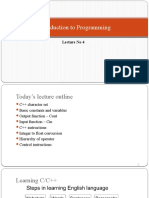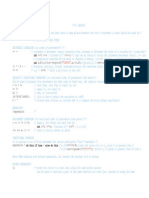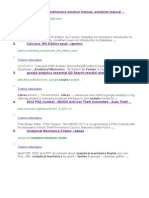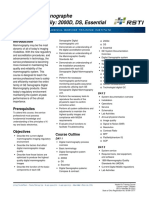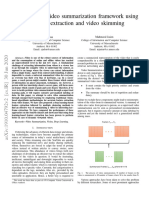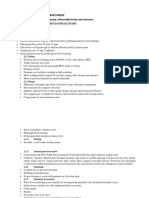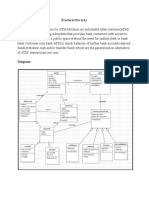0% found this document useful (0 votes)
14 views28 pagesLecture 2
The document outlines the content for Lecture 2 of the Introduction to Programming (CS 101) course, focusing on variables, data types, and operators. It covers the basics of variable declaration, assignment, and the four primary data types: char, int, float, and double, along with their usage and characteristics. Additionally, it introduces input/output operations using cin and cout, and emphasizes the importance of coding hygiene and comments in programming.
Uploaded by
gurvardaan01Copyright
© © All Rights Reserved
We take content rights seriously. If you suspect this is your content, claim it here.
Available Formats
Download as PDF, TXT or read online on Scribd
0% found this document useful (0 votes)
14 views28 pagesLecture 2
The document outlines the content for Lecture 2 of the Introduction to Programming (CS 101) course, focusing on variables, data types, and operators. It covers the basics of variable declaration, assignment, and the four primary data types: char, int, float, and double, along with their usage and characteristics. Additionally, it introduces input/output operations using cin and cout, and emphasizes the importance of coding hygiene and comments in programming.
Uploaded by
gurvardaan01Copyright
© © All Rights Reserved
We take content rights seriously. If you suspect this is your content, claim it here.
Available Formats
Download as PDF, TXT or read online on Scribd
/ 28







